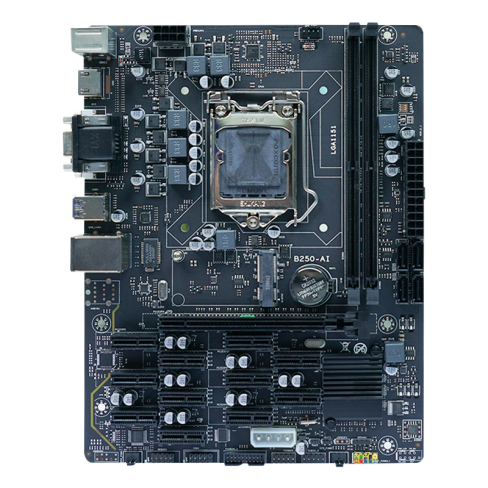In the vast world of computing, the motherboard stands as the central hub, connecting all your computer's vital components. It’s often referred to as the “brain” or “backbone” of your system, facilitating seamless communication between the CPU, RAM, storage drives, and other peripherals. Choosing the right motherboard is crucial for building a robust,high-performance computer. But with countless options available, navigating through the market can be overwhelming. Here’s a comprehensive guide to help you make an informed decision.
1. Understand Your Needs and Budget
Begin by assessing what you intend to use your computer for – gaming, professional work, content creation, or casual browsing. Each use case demands different hardware specifications. Gaming rigs might prioritize faster processors, ample RAM, and high-speed storage, while professionals might need robust processors and extensive connectivity options.Your budget will also play a significant role. Motherboards can range from budget-friendly options to high-end enthusiast models. Set a realistic budget that aligns with your performance expectations and upgrade plans.
2. Form Factor and Size
Motherboards come in various form factors, the most common being ATX, Micro-ATX, Mini-ITX, and E-ATX. The form factor determines the physical size and, consequently, the type of case you’ll need.
ATX: Full-sized, offering the most expansion slots and connectivity options.
Micro-ATX: Smaller and more compact, ideal for mid-tower cases.
Mini-ITX: The smallest form factor, perfect for small form factor (SFF) cases and HTPCs.
E-ATX: Extended ATX, larger than ATX, designed for high-end gaming and workstation builds.Choose a form factor that fits your desired case size and provides enough room for your current and future upgrade needs.
3. CPU Socket and Chipset Compatibility
Ensure the motherboard supports the CPU you plan to use. Intel and AMD use different CPU sockets, and motherboards are designed to be compatible with specific sockets. Additionally, the chipset determines the motherboard’s capabilities, such as the number of PCIe lanes, USB ports, SATA ports, and other connectivity options.Research the latest chipsets and their features to ensure your motherboard can handle your current and future hardware needs.
4. RAM Support
Memory (RAM) capacity and speed are crucial for system performance. Look for a motherboard that supports the latest DDR generation (DDR4 or DDR5) and offers sufficient slots for your desired RAM capacity. High-speed RAM is particularly beneficial for gaming and intensive multitasking.
5. Storage Options
Modern motherboards offer multiple storage options, including SATA ports for traditional hard drives and SSDs, as well as M.2 slots for NVMe SSDs. NVMe SSDs provide faster data transfer speeds, ideal for gaming and professional applications.Consider the number of storage options and their speed to ensure your system can accommodate your storage needs.
6. Expansion Slots and Connectivity
Expansion slots, such as PCIe, allow you to add graphics cards, network cards, and other peripherals. The number and version of PCIe slots (PCIe 3.0, PCIe 4.0) will depend on the motherboard and chipset.Connectivity options, such as USB ports (USB 3.0, USB 3.1 Gen 2, USB-C), HDMI, DisplayPort, and Thunderbolt, are also important. Ensure the motherboard offers a variety of ports to meet your current and future peripheral needs.
7. BIOS/UEFI Features
The BIOS (Basic Input/Output System) or UEFI (Unified Extensible Firmware Interface) is the software interface that initializes the system hardware during boot-up. Look for motherboards with user-friendly UEFI interfaces that offer advanced features such as overclocking options, fan control, and secure boot.
8. Brand and Reputation
Lastly, consider the brand and reputation of the motherboard manufacturer. Established brands, such as ASUS, MSI, Gigabyte, and ASRock, often have better customer support, warranty services, and a proven track record of reliability.
Conclusion
Choosing the right motherboard is a crucial step in building a high-performance computer. By understanding your needs, budget, and the specific features to look for, you can select a motherboard that not only meets your current requirements but also leaves room for future upgrades. Take your time, research thoroughly, and don’t hesitate to consult experts or read reviews from fellow enthusiasts. With the right motherboard, your computer will be well-equipped to handle any task you throw at it.
Angxun has been in the motherboard industry for more than 20 years. Registered the brand Angthumb in many countries,we have focused on the production and research and development of intel motherboard,all in one motherboard,and Industrial motherboard,server motherboard ,RAM,SSD,CPU,GPU etc.The website is : www.angthumb.com to know more!

Contact: Tom
Phone: +86 18933248858
E-mail: tom@angxunmb.com
Whatsapp:+86 18933248858
Add: Floor 301 401 501, Building 3, Huaguan Industrial Park,No. 63, Zhangqi Road, Guixiang Community, Guanlan Street,Shenzhen,Guangdong,China
We chat
